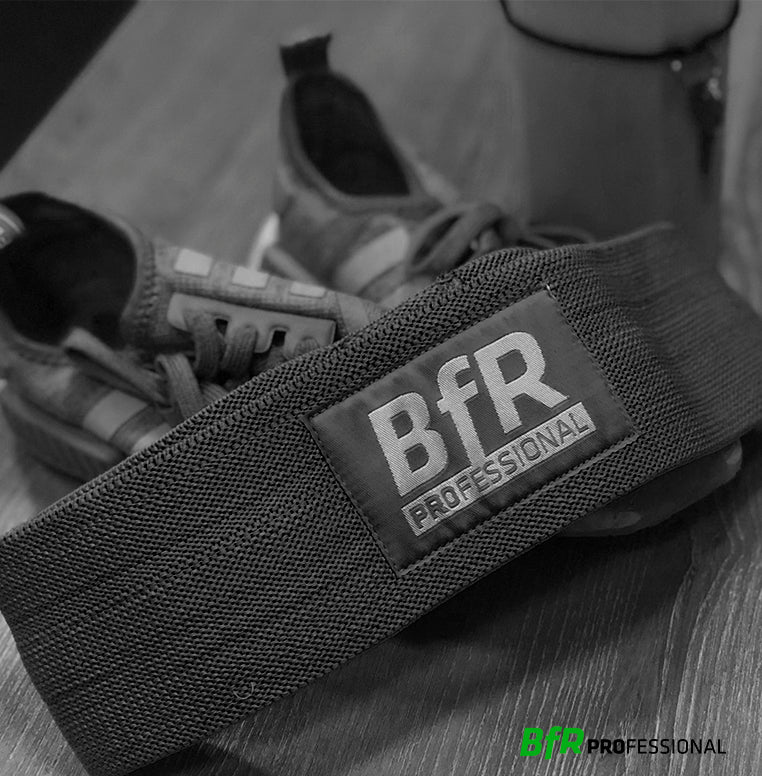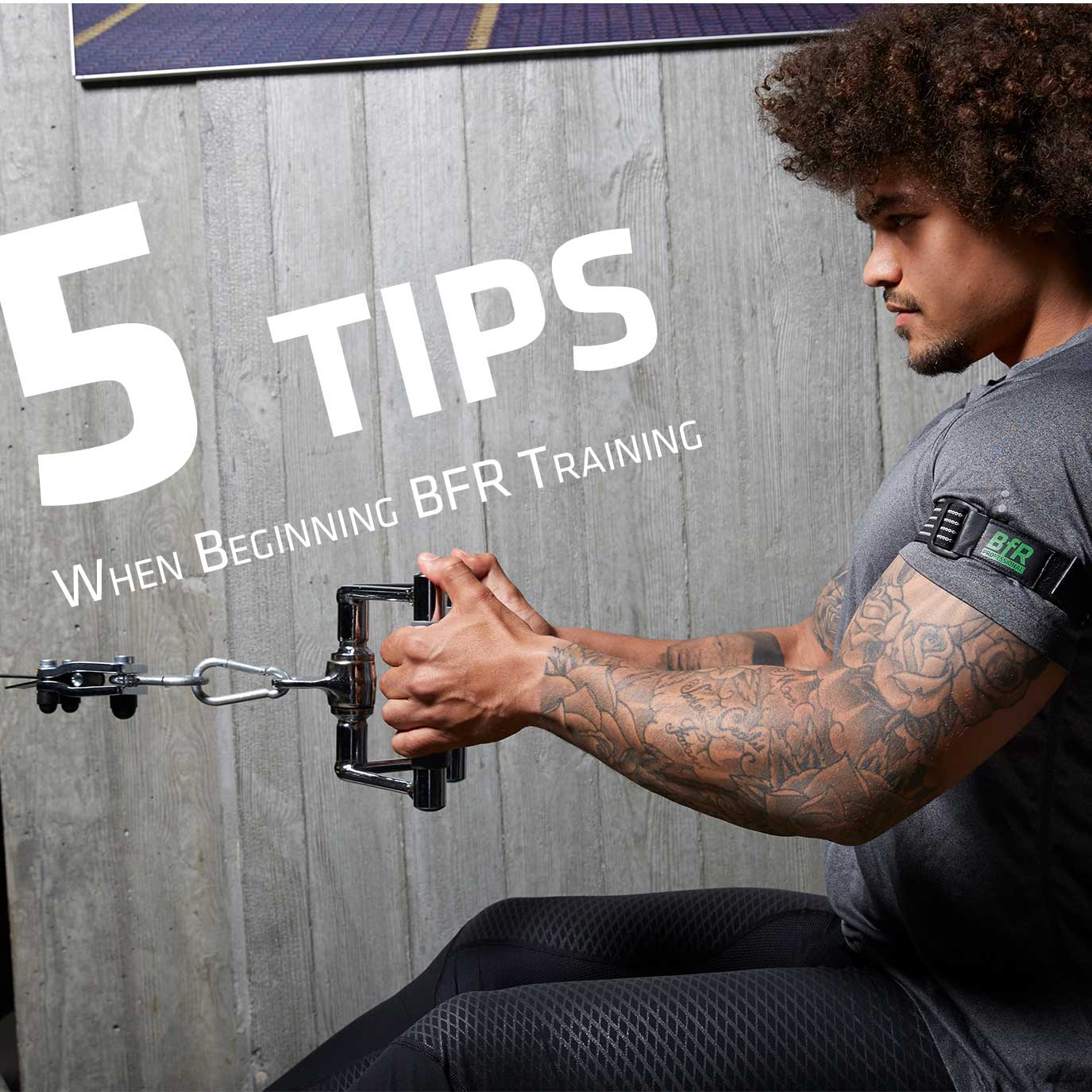What is Blood Flow Restriction Training?

With all the popularity and hype which blood flow restriction (BFR) training is receiving for its accelerated development of both muscle strength and mass, you’ve probably heard the terms blood flow restriction training, occlusion training or KAATSU training floating around online or in your local gym.
If you’re still unsure exactly what BFR training is or how to perform it, then this post is for you.
Terminology: BFR vs Occlusion vs KAATSU
For safety reasons, we need to first quickly address a few terminology issues.
You may see the terms blood flow restriction training, occlusion training and KAATSU training being used interchangeably – but that’s not strictly correct.
Occlusion training involves completely stopping the flow of blood into a part of the body. Occlusion training is extremely discouraged as it can result in damaged arteries, nerves, muscles, veins and an increase in risk of blood clots.
Whilst both blood flow restriction training and KAATSU training differ by only modifying blood flow rather than stopping it. KAATSU training uses expensive pneumatic tubes, cuffs and electronic monitors and requires a certified specialist to monitor you during your workout.
Blood flow restriction solutions, such as BfR Pro ARMS or LEGS, on the other hand, are simple to use and can easily be added to your workouts to maximise results. In other words, this is practical BFR training which means you adjust the pressure of the bands or straps yourself.
The history
KAATSU training was originally discovered in the 1960’s in Japan by scientist Yoshiaki Sato. Since then, there have been now hundreds of scientific studies from Japan, Denmark, Norway, England and USA researching the effects of blood flow restriction training.
The research to date has found that BFR training promotes muscle hypertrophy and strength gains more effectively compared to traditional low load weight lifting (10-30% of 1RM). In some research it has even provided better results than heavy load weight lifting (60-85% of 1RM) but the best response has been proven to be by combining low load BFR training with high load strength training.
A simple Google Scholar search about blood flow restriction training will provide you with plenty of academic articles on the topic to browse through.
What is blood flow restriction training?
Blood flow restriction training is a technique using straps around the top of your limbs in order to restrict blood flow to the veins but not your arteries. By doing so, you are allowing blood to enter into the muscle but not letting it leave again. This results in a massive increase in cell swelling (or “pump”) and a "danger" response in the muscle cells triggering it to restructure and become larger.
BfR straps also work to trap lactic acid within the muscle, creating an additional anabolic response which turns on protein synthesis. This metabolic stress is believed to play an important role in the beneficial effect of BFR training. These metabolites are implicated in creating a hypertrophic response including lactate, inorganic phosphate, and hydrogen ions.
Read more about how muscle fibres react during blood flow restriction.
Read more about blood flow restriction training and muscle hypertrophy.
What the scientific evidence shows
There have been numerous studies conducted into the benefits and efficacy of blood flow restriction training. Of interest to most people are the increased speeds with which muscle growth can be achieved.
A Danish study in 2012 researched whether BFR training could produce more efficient results than traditional resistance training (normally resulting in 15-25% muscle increase after 3 months). The study found that the subjects undergoing training with blood flow restriction achieved 35-40% muscle increase in only 3 weeks.
A similar study conducted with British elite rugby players in 2014 compared regular resistance training with the same training with added blood flow restriction. The study found that BFR training resulted in players’ squat strength, bench press, jump power and sprint time improving by 200% (Cook et al, 2014).
Is BFR training safe?
The short answer is: Yes, blood flow restriction training is safe; but there are a two key precautions you should take to avoid the potentially harmful effects which can come from accidently occluding your muscles or over training.
We’ve seen some YouTubers suggest using everything from knee wraps to bicycle inner tubes to restrict blood flow just to save a penny or two. But applying BfR straps correctly for accurate, consistent & even pressure on your muscles is easier said than done with make-shift straps (not to mention the risks you run of totally occluding the muscle!). Be sure to choose a quality-built product like the bands from BfR Pro which allow for easy application of strap to find the right tightness and quick release features, should you want to remove your straps in a hurry.
When performing a BFR workout, you are going to be dropping the weight considerably. Most blood flow restriction workouts utilise a weight of 20-40% of your one-rep max (1RM); or alternatively, around 40% of what you normally lift. You’ll also be focusing on a higher repetition range – around 15-30 reps per set – with short rest periods of around 30 seconds.
Take a look at our blood flow restriction workout suggestions for more ideas on how to incorporate BfR into your training. And don’t forget to share your personal success stories with the BfR family on Facebook, Instagram or Twitter using @bfrpro and #bfrpro.
Team BfR Professional
1 Response
mario
I use it from the start of mine training. I do 30 repetition in three sets. I gain easy fat and this is a good way for me to gain some weight and dont hurt my bones..)) thank you.
Leave a comment
Comments will be approved before showing up.









Lars Thorn
Author